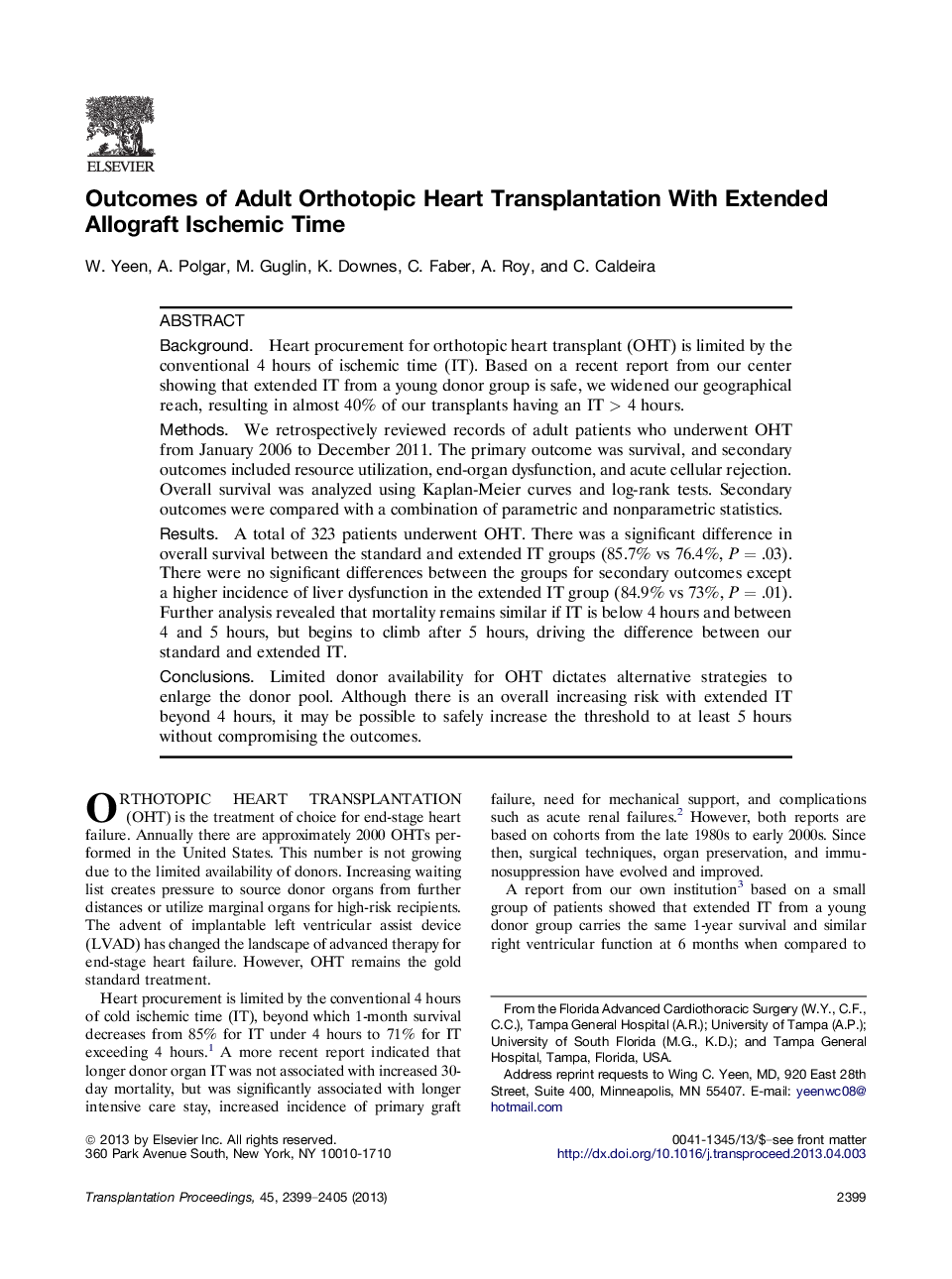| Article ID | Journal | Published Year | Pages | File Type |
|---|---|---|---|---|
| 4255689 | Transplantation Proceedings | 2013 | 7 Pages |
BackgroundHeart procurement for orthotopic heart transplant (OHT) is limited by the conventional 4 hours of ischemic time (IT). Based on a recent report from our center showing that extended IT from a young donor group is safe, we widened our geographical reach, resulting in almost 40% of our transplants having an IT > 4 hours.MethodsWe retrospectively reviewed records of adult patients who underwent OHT from January 2006 to December 2011. The primary outcome was survival, and secondary outcomes included resource utilization, end-organ dysfunction, and acute cellular rejection. Overall survival was analyzed using Kaplan-Meier curves and log-rank tests. Secondary outcomes were compared with a combination of parametric and nonparametric statistics.ResultsA total of 323 patients underwent OHT. There was a significant difference in overall survival between the standard and extended IT groups (85.7% vs 76.4%, P = .03). There were no significant differences between the groups for secondary outcomes except a higher incidence of liver dysfunction in the extended IT group (84.9% vs 73%, P = .01). Further analysis revealed that mortality remains similar if IT is below 4 hours and between 4 and 5 hours, but begins to climb after 5 hours, driving the difference between our standard and extended IT.ConclusionsLimited donor availability for OHT dictates alternative strategies to enlarge the donor pool. Although there is an overall increasing risk with extended IT beyond 4 hours, it may be possible to safely increase the threshold to at least 5 hours without compromising the outcomes.
